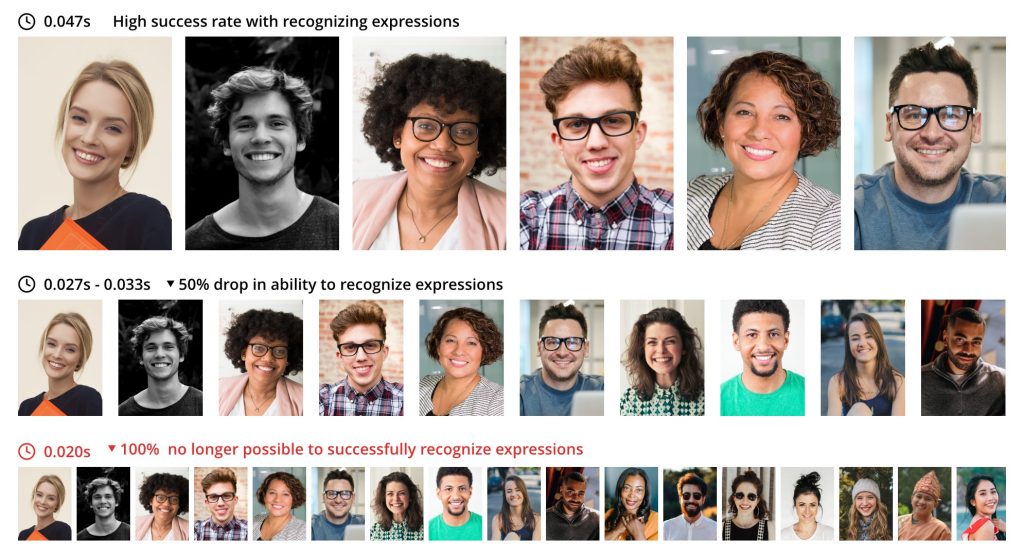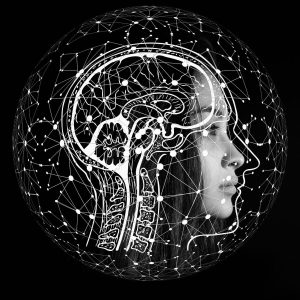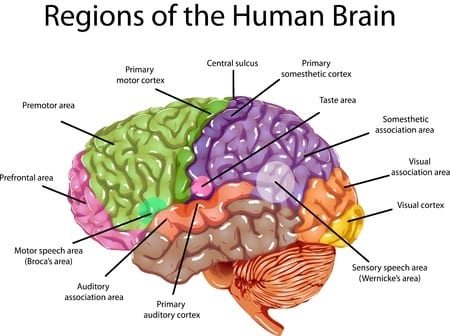The subconscious mind is a fascinating and complex aspect of our mental processes that influences our thoughts, emotions, and behavior. Despite its importance in shaping our experiences, it remains largely unknown to our conscious awareness. In this article, we will explore the concept of the subconscious mind, its functions, and how it can impact our lives. Through the latest research and insights, we will gain a deeper understanding of the subconscious mind and its role in our mental and emotional well-being.
Content
- Diving into the subconscious mind
- Subconscious Mind: Where Does It Hide?
- Scientific Detection of the Subconscious Mind
- Activation of Brain Regions
- Unveiling the Depths of the Subconscious Mind: A Glimpse into Current Research
- Rethinking the Subconscious: A Critical Perspective
- Simpler Way to Harness the Power of Subconscious Mind
- Free 52-page Human Behavior Guide
- References
Diving into the subconscious mind
Do you remember when you tried to ride a bicycle for the first time?
Can you count the number of repetitions necessary to perform a flawless dance?
Have you ever tried to master a new musical instrument?
Most likely, first attempts to synchronize a new set of complex actions are always difficult. Once we become more skilled, these movements start to require less conscious awareness until everything begins to flow naturally.
All these automatic movements are guided by one of the most powerful inner forces which drive human behavior – the subconscious mind (also commonly referred to as the nonconscious mind).
In this article we take you on a trip through the subconscious mind, go through some of its core concepts, how it impacts the brain and finally we present you with a comprehensive guide on how to leverage the subconscious mind in human behavior research.
Subconscious Mind: Where Does It Hide?
It’s not uncommon to hear about conscious and unconscious types of actions when scientists talk about the brain. As a result, most of us are familiar with the idea that our behavior is less rational than we believe to be.
Whether we like it or not, our ability to control thoughts, synchronize movements, or experience emotions depends on the depth of information processing.
The idea of deeper levels of information processing was developed and extensively studied by famous Austrian psychologist Sigmund Freud (1856 – 1939) who introduced the 3 level mind model. According to his model, the mind could be divided into following levels:
Three-level mind model
- Conscious – defines all thoughts and actions within our awareness. For example, the beauty and pleasance of the smell of a red tulip
- Subconscious – defines all reactions and automatic actions we can become aware of if we think about them. For example, our ability to drive a car: once we get skilled we stop thinking which gears to use, which pedals to press, or which mirror to look at, yet can always become aware of what was done once we think about it.
- Unconscious – defines all past events and memories, though at times inaccessible to us no matter how hard we try to remember to bring things up. For example, the first word we’ve learned to say, or how it felt to be able to walk on our own.
Scientific Detection of the Subconscious Mind
Up to this day, the ability to explain how the interaction of different levels of thoughts influences our behavior remains one of the most compelling challenges in psychology and neuroscience. While Freud’s ideas about the subconscious mind ultimately proved outdated, they offer a helpful starting point for introducing the concept of differing levels of information processing.
In order to untangle how one level of thought influences the other, scientists must become able to detect different depths of the mind.
Quite often, the levels of information processing could be captured using priming paradigms. For example, one psychological study showed how irrelevant cues shape learning and suggested that the effect of conscious, subconscious, and unconscious thoughts can be modeled varying presentation time of emotional faces.

In this experiment, participants were presented with a set of pictures of human faces and were asked to determine whether the facial expression in a previous picture mimicked the same emotion.
Interestingly, results showed that people were able to correctly recognize the difference between facial expressions if pictures were displayed for at least 0.047s. Once the duration of pictures was decreased to 0.027s – 0.033s, the rate of correct responses dropped by approximately a half. In contrast, respondents became unable to discriminate the facial expressions if the duration of the stimulus was decreased even more – to 0.020s.
This way, research demonstrated clear differentiation of conscious and unconscious influence of thoughts: people were only able to give error-free answers if the picture could reach the level of conscious awareness. More surprisingly, duration of pictures, shown for as long as 0.027s – 0.033s, couldn’t be sufficient for stimulus verbalization at the level of conscious awareness, yet had a measurable influence on behavior.
Specifically, the rate of correct responses decreased just by half, meaning that participants were still partially able to provide with correct responses and indicated the presence of the subconscious mind.
Interested in Human Behavior and Psychology?
Sign up to our newsletter to get the latest articles and research send to you

Activation of Brain Regions
You might get curious whether the brain activation differs when we experience an influence of subconscious versus conscious mind. You might want to know why conscious thoughts are often processed slower than unconscious thoughts.
Or might question whether scientists can define exact processing pathways of such tiny subtle concepts as subconscious thought.

Until recently, it was impossible to capture where in the brain these thought processes occur or visualize specific brain activation regions. However, brain imaging methods allow researchers to study thought processing pathways by providing an opportunity to visualize changes within the brain.
Today, brain imaging research has indeed this model of the mind and suggested that the depth of thought depends on its processing pathway. In particular, studies (study 1, study 2) showed that the pathways of conscious and unconscious thoughts can be differentiated.
In contrast, the pathway of the subconscious mind is difficult to define. In fact, subconscious thoughts do not seem to have their own processing pathway. Rather, they share the bits of both – conscious and unconscious – routes of information processing.
Unveiling the Depths of the Subconscious Mind: A Glimpse into Current Research
The subconscious mind, a concept that has intrigued psychologists and neuroscientists for decades, is undergoing a renaissance in scientific exploration. Recent advances in neuroimaging and cognitive science have started to shed light on this enigmatic part of the human psyche, revealing its profound influence on creativity, decision-making, and learning. This section delves into groundbreaking studies that illuminate the vast capabilities and complexities of the subconscious mind.
One of the pivotal moments in recent research was the study conducted by John-Dylan Haynes at the Bernstein Center for Computational Neuroscience in Berlin. Haynes’ research unveiled that decisions could be traced in the brain activity up to 10 seconds before individuals become consciously aware of them. This finding challenges the traditional notion of the subconscious merely as the brain’s “autopilot” and suggests its central role in the intricate dance of decision-making [1].
Further exploring the subconscious’s capabilities, Dr. Aurelio Cortese and a team at the Advanced Telecommunications Research Institute International in Kyoto demonstrated that individuals could learn to make rational choices based on their nonconscious brain activity. This study, which involved a simple trial-and-error learning procedure, underscores the subconscious mind’s adaptability and its potential to tap into ‘dormant’ skills [2].
Moreover, the work of Dr. Stanislas Dehaene, the director of the Cognitive Neuroimaging Unit at INSERM, France, elegantly revealed how subconscious and conscious thoughts interplay. His experiments demonstrated that the subconscious mind could process information—such as emotional words—faster than the conscious mind, providing insights into how subconscious processing influences our perceptions and reactions [3].
These studies mark just the beginning of a journey into understanding the subconscious mind. They not only challenge our preconceived notions about the subconscious but also open up new avenues for exploring how this part of our brain shapes our thoughts, behaviors, and creativity. As research continues to evolve, we may find ourselves on the cusp of unlocking the full potential of the subconscious mind, with implications for enhancing learning, problem-solving, and decision-making.
Keep up with the latest in human behavior research and technological developments
Rethinking the Subconscious: A Critical Perspective
The pervasive belief in the overwhelming power of the subconscious mind to shape our decisions and actions is facing a rigorous challenge. Drawing on the insights from Professor Ben Newell’s research at the UNSW School of Psychology and his co-authored book, Open Minded: Searching for Truth about the Unconscious Mind[4], with Professor David Shanks from University College London, a new narrative emerges. This narrative questions the longstanding assumption of the subconscious mind’s dominant influence over human behavior and decision-making processes.
Key Insights:
- Reevaluating the Unconscious: The traditional view that our unconscious mind holds significant sway over our judgments, decisions, and choices is critically examined. Newell and Shanks argue that the impact of the unconscious has been overstated in contemporary psychological thought, challenging the evidence supporting such claims.
- Conscious Over Unconscious: Contrary to popular belief, Newell posits that our conscious mind plays a more pivotal role than previously acknowledged. This perspective shifts the narrative from being under the unconscious mind’s control to being the conscious authors of our actions, emphasizing the power of awareness and deliberate choice.
- The Allure of the Unconscious: The idea that our brains make decisions for us on an unconscious level is undeniably appealing. However, Newell encourages viewing the brain as a cohesive system under our control, rather than compartmentalizing it into conscious and unconscious processes.
This shift in understanding calls for a nuanced exploration of how conscious and subconscious processes interact and influence human behavior. It invites a reconsideration of the traditional dichotomies between the conscious and unconscious, suggesting a more integrated view of the mind.
For those intrigued by the evolving debate on the subconscious versus conscious influences on our lives, Professor Newell’s book Open Minded: Searching for Truth about the Unconscious Mind offers a deep dive into these complexities. The conversation around the power of the subconscious mind is far from settled, but Newell’s research provides a compelling argument for rethinking its role in our daily lives.
Further Exploration:
- We’re in control: new research dismantles power of the unconscious provides a detailed overview of Newell and Shanks’ arguments against the traditional views of the unconscious mind’s power.
- For a broader perspective on the power of the subconscious, Picking our brains: How powerful is the subconscious? and The consciousness wars: can scientists ever agree on how the mind works? offer insights into the ongoing debates in the field of psychology and neuroscience.
Simpler Way to Harness the Power of Subconscious Mind
You might want to define the influence of subconscious thought if you are interested how it can shape behavior. While only a few of us have access to research laboratories, and sufficient funds to run these types of studies, its still possible to explore and research the subconscious mind.
As a solution, iMotions offer a cutting edge platform allowing to address such challenges of research. Please check this link for more information.
Free 52-page Human Behavior Guide
For Beginners and Intermediates
- Get accessible and comprehensive walkthrough
- Valuable human behavior research insight
- Learn how to take your research to the next level

References
Bargh, J. A., & Morsella, E. (2008). The unconscious mind. Perspectives on psychological science, 3(1), 73-79.
Horga, G., & Maia, T. V. (2012). Conscious and unconscious processes in cognitive control: a theoretical perspective and a novel empirical approach. Frontiers in human neuroscience, 6.
Meneguzzo, P., Tsakiris, M., Schioth, H. B., Stein, D. J., & Brooks, S. J. (2014). Subliminal versus supraliminal stimuli activate neural responses in anterior cingulate cortex, fusiform gyrus and insula: a meta-analysis of fMRI studies. BMC psychology, 2(1), 1.
Stephan, K. M., Thaut, M. H., Wunderlich, G., Schicks, W., Tian, B., Tellmann, L., … & Hömberg, V. (2002). Conscious and subconscious sensorimotor synchronization—prefrontal cortex and the influence of awareness. Neuroimage, 15(2), 345-352.
Watanabe, N., & Haruno, M. (2015). Effects of subconscious and conscious emotions on human cue-reward association learning. Scientific reports, 5.
- Chun Siong Soon, Marcel Brass, Hans-Jochen Heinze & John-Dylan Haynes
Unconscious determinants of free decisions in the human brain.
Nature Neuroscience April 13th, 2008. https://doi.org/10.1038/nn.2112 ↩ - Cortese, A., Lau, H. & Kawato, M. Unconscious reinforcement learning of hidden brain states supported by confidence. Nat Commun 11, 4429 (2020). https://doi.org/10.1038/s41467-020-17828-8 ↩
- Med Sci (Paris) 2006 ; 22 : 702–704, Le contenu émotionnel des mots peut moduler leur accès à la conscience, Raphaël Gaillard, Antoine Del Cul, Lionel Naccache, et Stanislas Dehaene, https://doi.org/10.1051/medsci/20062289702 ↩
- Open Minded: Searching for Truth about the Unconscious Mind By: Ben R. Newell, David R. Shanks, https://doi.org/10.7551/mitpress/14922.001.0001 ↩











